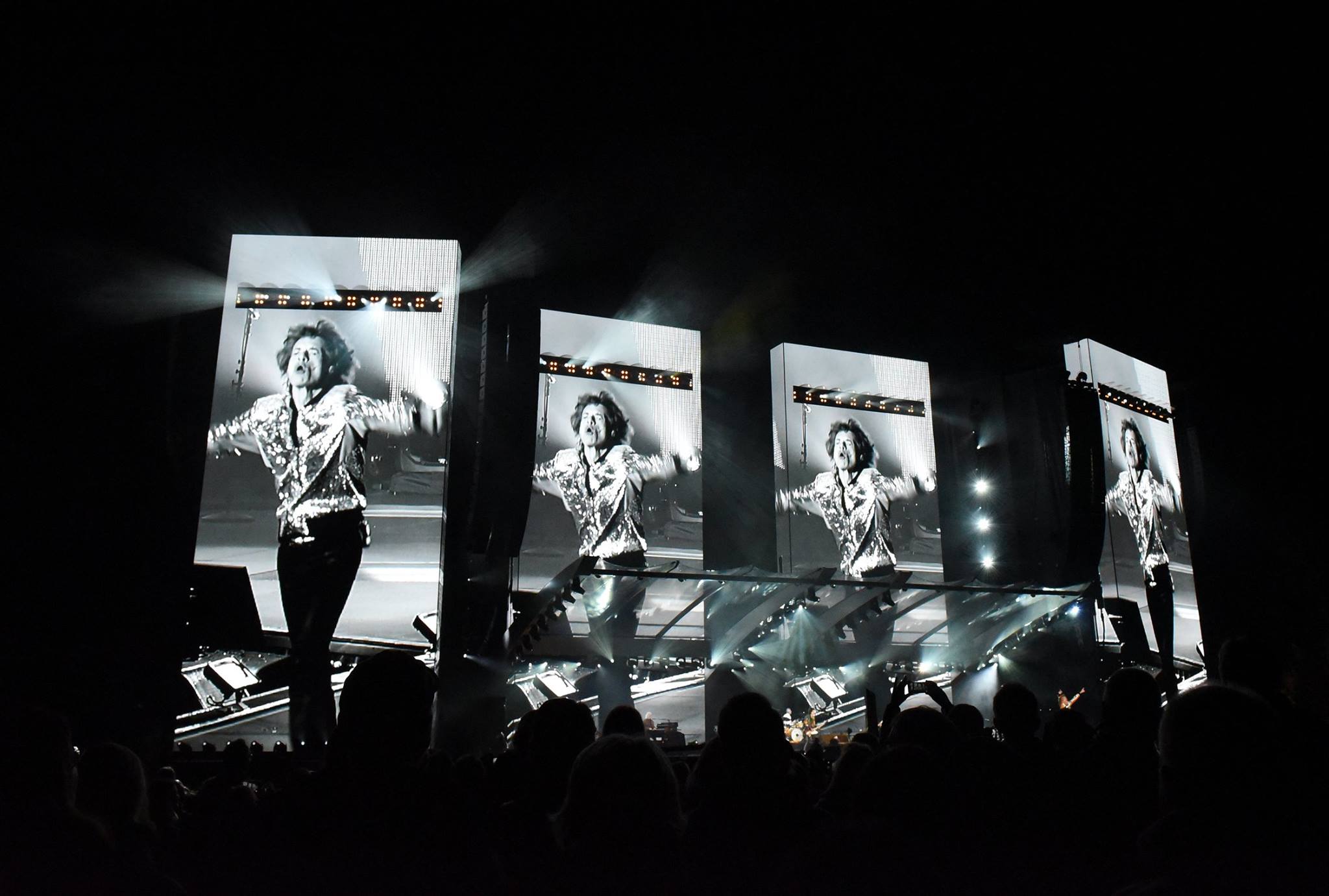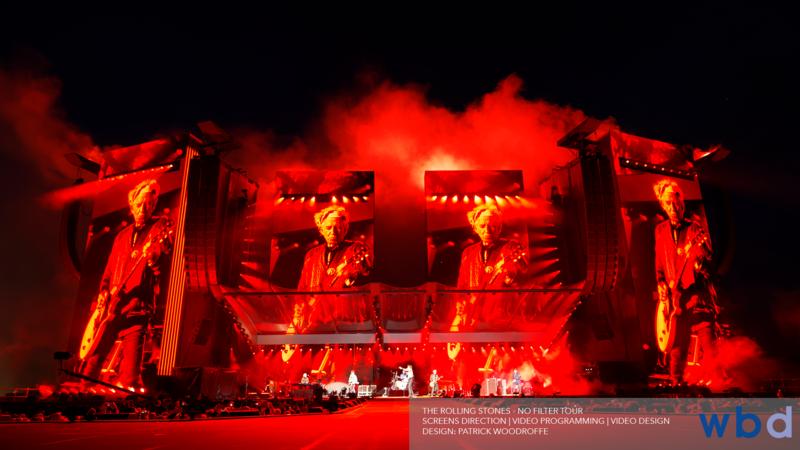Roland Greil – 5 Lessons In Light
Posted on November 4, 2025
This Munich-based designer has earned global acclaim for his collaboration with Woodroffe Bassett Design (WBD) for artists like Adele, Phil Collins, and The Rolling Stones. Recently, he has been responsible for the co-lighting design of the current Rammstein stadium tour and Genesis’s Last Domino tour with WBD.
Beyond the world of concert and touring, his impressive body of work includes lighting iconic television productions such as the Eurovision Song Contest (the most widely watched televised music show in the world), preeminent corporate shows, theatrical productions and major events like the recent Longines Global Champions Tour in Rabat, Morocco, the opening ceremony for the Asian Cup in Doha and many more major event productions.
Following a holistic approach to design, Greil emphasizes collaboration at the beginning of the process with the goal of ensuring that every element flows smoothly into the final production. It is one of the valuable lessons that he shares here.
One: Less is more — Modern technology often presents an irresistible allure for the inner nerd that resides in many of us. This temptation, however, is one we should consciously resist. Achieving success in our endeavors frequently hinges on our ability to avoid the overuse of technology. Rather than using tech for its own sake, it is essential that we utilize it with specific, purposeful intent.

When it comes to specifying kit and the extent of technology we incorporate into our designs, these choices should be driven by the overarching design philosophy and creative vision. Our approach can vary dramatically; sometimes, it may call for the use of very simple technology applied in a minimalist manner, while at other times, it may warrant the integration of the latest and most advanced innovations—as long as these choices serve a clear and justified purpose.
Ultimately, the challenge lies in striking a harmonious balance between simplicity and complexity. Leveraging technologies can enhance clarity and functionality, creating designs that resonate with the audience by avoiding unnecessary distractions. Conversely, adopting cutting-edge technologies can unlock new dimensions of creativity and possibilities, provided that their use is thoughtful and aligned with the show.
In this regard, our decisions about technology should always prioritize the experience and the integrity of the design, ensuring that every tool and feature contributes meaningfully to the overall vision. By maintaining a focused and strategic approach, we can harness the best of what modern technology has to offer, enhancing our designs without compromising their essence.
Two: Remember who is in the focus — In the realm of lighting design and show production, one of the most crucial lessons is recognizing and accepting the fact that our work, in approximately 99.9% of cases, is not about us as designers. Aside from certain notable exceptions, such as light art festivals, the predominant focus must always be on the artists, the performance, and the narrative being presented on stage. Our role, alongside other visual elements, is to create a cohesive visual framework that enhances their performance without overshadowing it.

Understanding this principle involves a deep awareness of how our designs function within the broader context of the production. It is essential to develop an instinct for how grand or intimate the visual framework needs to be, as the scale and atmosphere of our lighting can dramatically influence the audience’s experience. A perfectly balanced visual frame not only complements the performance but also helps to amplify the emotions and messages being conveyed.
To achieve this, collaboration with directors, choreographers, and performers is key. Engaging in open discussions about their vision allows us to create lighting designs that are both supportive and innovative. By aligning our aesthetic choices with their artistic intent, we can ensure that our work serves to enhance rather than dominate the performance.
Moreover, a crucial part of our role as designers is to remain adaptable and responsive. Different performances may require varying approaches to lighting design, and it is our job to assess each unique situation thoughtfully. Whether illuminating a grand spectacle or crafting the subtle ambiance for a more intimate scene, our ability to tailor the visual experience to the needs of the performance is what ultimately defines our success.
In summary, recognizing that our contributions to lighting and show design should always serve the narrative and the performers is fundamental. By prioritizing their artistic expression and crafting a visual environment that supports their story, we create a harmonious experience for the audience that not only highlights the performance but also leaves a lasting impression.
Three: Finding the brake pedal — In today’s world, a vast array of technology beckons us to push the boundaries, showcasing the full capabilities of our skills and tools. It’s easy to get caught up in the excitement of dazzling effects and intricate designs. However, akin to the principle of “less is more,” the key to crafting truly magical moments lies in knowing when to apply the brake instead of the throttle.

When we consider a particular look or effect, it’s essential that its use is justified and serves a distinct purpose. Every element we incorporate into a performance—be it on stage, in a stadium, or in any other setting—should enhance and support the overall narrative, rather than detracting from it.
Often, in the initial stages of programming and show creation, there is a tendency to over-engineer our designs. We might layer effects upon effects, attempting to create something spectacular. Yet, in many cases, the transformation from something that is merely good to something great occurs when we take a step back and simplify our approach. By stripping away the excess and focusing on the essentials, we can highlight the core of the performance, allowing it to shine.
Finding your “brake pedal” is about exercising restraint and maintaining an attentive, discerning eye. It’s about recognizing that not every technological capability needs to be utilized at once. Instead, it requires a thoughtful understanding of when to amplify and when to temper our designs, ultimately striving for a harmonious balance.
This mindset leads to richer storytelling and a more profound connection with the audience. The most memorable moments in lighting and show design often emerge from subtlety and precision rather than overwhelming spectacle. Therefore, as designers, we must cultivate the awareness to know when to hold back and allow the performance to take center stage.
In summary, while the allure of advanced technology can tempt us into excess, embracing the power of limitation can elevate our work. By consciously selecting our moments of impact and ensuring that every decision serves a meaningful purpose, we can create truly extraordinary experiences that resonate deeply with audiences and celebrate the heart of the performance. So, take a moment to find your brake pedal, and let it guide you toward crafting remarkable, unforgettable moments.
Four: No light without darkness -When a venue, theater, or space is bathed in full light, it often loses the essential qualities of theatricality, depth, and enchantment. This principle is fundamental to effective lighting design. The presence of darkness is just as crucial as bright lighting; it acts as a canvas that allows our desired looks and moods to emerge with clarity and impact.

The interplay between light and dark is what creates a dynamic visual experience. In both the design process and the programming phase, it is vital to keep in mind the importance of including “black space.” This absence of light not only allows the lit elements to stand out but it also provides a necessary contrast that enriches our overall composition. By thoughtfully incorporating darkness, we enhance the visual storytelling, creating layers of depth that captivate the audience.
Moreover, even in the context of key lighting, a judicious amount of shadow can introduce an exciting element of intrigue. It can transform an ordinary image into something striking and memorable, setting it apart from the standard, bland lighting often seen in typical broadcasts. The skillful use of darkness can evoke emotion, draw focus, and create a more immersive experience for the viewer.
In lighting design, it is essential to understand that each lighting decision contributes to the overall atmosphere. The strategic inclusion of dark areas allows for the development of intricate contrasts that enhance the visual narrative. By acknowledging the significance of these darker spaces, we can craft lighting designs that not only illuminate but also evoke deeper feelings and reactions within the audience.
Ultimately, the fusion of light and darkness is what gives a performance its dramatic flair and emotional resonance. By embracing this balance, we can elevate our designs to new heights, enriching the viewing experience and leaving a lasting impression. As we navigate the intricacies of lighting design, let us remain mindful of our reliance on both light and dark, creating works that are not just seen but felt.
Five: We’re all in the same boat — We are all fortunate to work in an industry that allows us to rise from zero to hero, fueled solely by our passion and motivation. This unique journey in the entertainment world is one that thrives on creativity, collaboration, and hard work. However, it is crucial to remain grounded throughout this experience. While we might enjoy moments of recognition and success, we must remember that we are not rock stars; rather, we are part of a larger ecosystem where teamwork is essential to turning dreams into reality.
To produce extraordinary shows and compelling productions, every individual’s role is significant, whether you are the lead designer, a local runner, or a technician behind the scenes. Each person contributes toward the shared goal of creating awe-inspiring experiences. Thus, it is vital that we treat one another with the utmost respect and kindness, regardless of our respective positions. This inclusive mindset fosters a positive environment where collaboration flourishes.
Never let pride or ego prevent you from lending a helping hand. Whether it’s assisting a colleague in rigging a light or helping move equipment, these seemingly small acts of kindness strengthen our professional relationships and build a supportive community. Remember that in this industry, as in life, you often encounter the same people multiple times—from the ascent to success to the inevitable challenges that may follow.
Maintaining humility ensures that we build genuine connections and leave a lasting impression on those we work with. After all, the respect and camaraderie you cultivate today can create invaluable support in the future.
In conclusion, let us embrace our shared journey with gratitude and integrity. By grounding ourselves in respect and teamwork, we can achieve extraordinary heights together, making a lasting impact on both the industry and the lives we touch along the way.